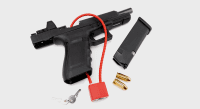Dear Editor,
Needle exchange programs have been a topic of controversial debate. Public health and safety is important when it comes to best practice policies in regards to drug needle exchange programs. The big debate on this issue is, are needle exchange programs promoting drug usage instead of supporting the individual to stop using drugs and do needle exchange programs reduce bloodborne pathogen infection rates.
Needle exchange programs (NEP) are designed to stem the spread of HIV and other blood borne pathogens among injection users, by providing sterile needles in exchange for contaminated ones (Huo, 2005). According to ANA code of ethics with interpretative statements of 2015 Provision 8.1, The nursing profession holds that health is a universal human right. This right has economic, political, social, and cultural dimensions. It includes access to health care, emergency care, trauma care, basic sanitation, education concerning the treatment and health problems, food security, immunizations and prevention and control of local endemic diseases and vectors. Abstract needle-syringe programs have been effective in reducing HIV and Hepatitis C (HCV) infections among people who inject drugs (Abdul-Quader 2013).
Nurses are in a difficult place when it comes to needle exchange programs because we have an obligation to promote harm reduction while at the same time supporting the patient to stop using drugs. Both scenarios are vital in the patient’s overall health and wellness. Provision 5.1 Duties to Self and others of the ANA states, moral respect accords moral worth and dignity to all human beings regardless of their personal attributes or life situations (American Nurses Association, 2015). Opponents of supervised injection facilities argue that they facilitate injecting drug use, attract drug users into the local area and send the wrong signal about the social acceptability of drug use (Hall & Kimber, 2005). Nurses must provide continuity of care by helping the patient stay healthy and part of that plan of care may be providing the patient resources to exchange dirty needles for clean needles. This helps the patient to stay healthy from bloodborne pathogen infections, but it does not keep them healthy from other complications that arise from using intravenous drugs. It can appear, that nurses in a way are supporting and enabling the patient to use drugs. This puts the nurse in an ethical conundrum. Street outreach workers provide support and referral services for needle exchange program users. These services include referral and expedited access and transportation to drug treatment sites, health care facilities, homeless shelters, and other social service agencies. The outreach workers are also trained as STD educational specialists and provide risk reduction counseling and referral for STD and HIV testing and diagnosis (Somlai et al., 1999).
According to ANA code of ethics 8.2, all nurses commit to advancing health, welfare, and safety. This nursing commitment reflects the intent to achieve and sustain health as a means to the common good so that individuals and communities worldwide can develop to their fullest potential and live with dignity”. (American Nurses Association 2015). As nurses we work collaboratively with different teams in the community to ensure care to the patients who use IV drugs. We must be unbiased in how we feel about drug use and the impacts it has on the individual and community but at the same time it’s our obligation to support and educate the patient about the negative medical effects that drugs may create for the patient regarding their health. That line gets very blurry ethically.
Needle Exchange programs are a controversial topic. It can be a tough ethical and moral decision for health care providers and there will always be many debates on both sides of the argument. At the end of the day the nurse must provide nonjudgmental, high quality, best practice care to the patient in all aspects of their health journey. That care could be reducing infection due to drug through needle exchange programs or treating complications from drug use. As a nurse we must find a healthy balance on reducing infection rates while encouraging and supporting the patient to not do drugs in a realistic way.
References
Huo, Dezheng, et al. “Drug use and HIV risk practices of secondary and primary needle exchange users.” AIDS Education and Prevention, vol. 17, no.2, 2005, pp 170-84. ProQuest, http://ezproxy-h.pierce.ctc.edu.edu//www.proquest.com/scholarly-journals/drug-use-hiv-risk-practices-secodary-primary
Abdul-Quader, A., Feelemyer, J., Modi, S., Stein, E.S., Briceno, A., Semaan, S., Horvath Kennedy, G.E., Des Jarlais, D., C. (2013). Effectiveness of structural-level needles/ syringe programs to reduce HCV and HIV infection among people who inject drugs: a systemic review. AIDS and Behavior, 17(9), 2878-92 https://doi.org/10.1007/s10461-013-0593-y
Hall, W., Kimber, J. (2005). Being realistic about the benefits of supervised injecting facilities. The Lancet, 366(9482), 271-2. https://doi.org/10.1016/S0140-6736(05)66476-8
Somlai, A. M., Kelly, J. A., Otto-Salaj, L. & Nelson, D. (1999). “LifePoint”: A case study in using social science community identification data to guide the implementation of a needle exchange program. AIDS Education and Prevention, 11(3), 187-202. http://ezproxy-h-pierce.ctc.edu/login?url=http://www.proquest.com/scholarly-Journals/lifepoint-case-study-using-social-science/docview/198004084/se-2
American Nurses Association. (2015). Code of ethics for nurses with interpretative statements. American Nurses Association.

















